【神秘思想と現代】”分身” を乗り超えるユング、フロイトとの訣別
何だかNHKの読書番組でユングをやっている。偶然とはいえ気持ち悪い。まあNHKでグノーシスの話はしないだろうし、フランスやイギリスではナチに関与したのしないので毛嫌いされているという話もしないだろうから、基本的にかぶってはいないだろう。
ユングはホント、アメリカに渡ってよかったねという人だ。アメリカには歴史の葛藤がないので新しいものは “文脈なし” に受け入れてくれる(誤解したままともいえるが・・・)。
関連記事:
ユングの心理学とグノーシス主義01
ユングの心理学とグノーシス主義02
ユングの個性化の意味
今回はフロイトとの訣別ネタだがその前に、ユングがグノーシス思想をどのように心理学に翻案したのか、簡単に探っておきたい。
ユングの提出した重要概念「個性化」は、individuationの訳語だ。なぜ、これを訳した日本人は「個人化」ではなく「個性化」としたのだろうか?
individualということばは例によってラテン語由来だが、使い始められたのは17世紀に入ってからで比較的新しい。殊更「個人」という必要のない時代が長く続いたということだろう。individualは、
in- “not, opposite of” + dividuus “divisible,” from dividere “divide.”
とあるように「分割できないもの」を意味する。”a single person” は社会の最小構成単位だから、それ以上「分割できないもの」だ。この面を強調すると「個人」という訳語が出てくる。
翻って「個人」はなぜそれ以上分割できないのかを考えると「他の誰でもないその人」だからである。「他の誰でもないその人」という性質に注目したとき「個性」という訳語が出てくる。
ユングは、人間は生まれたときから「自我」に囚われた状態にあり、その意識が集合無意識と深く結びついていない人間は単なる「個人」であって、いまだ「個性」に至っていないと考える。そこでの「個性」は、一般にイメージされているような、本人にあらかじめ備わり、放っておいても発現するというようなものではない。ふつうの人は「個人」を「個性」と誤解しているのである。この「意識」が、己のことを誤解した状態を「自我」と呼ぶ。
グノーシス的な完全な人間
では、どうすれば「自我」は「個性」になれるのか?
「意識」をしつけるしかない。グノーシスの出番である。グノーシスの前提によれば、この世界は「他の誰でもないその人」になるためには、やさしく出来ていない。世界の始めに、男と女が分離し、天と地が分かれ、物質界は霊界から切り離された二元的世界に、人間はハンデを抱えた不完全な状態で産み落とされる。これがデフォルト状態の「自我」だ。
そこから「他の誰でもないその人」へ至るには、人類が共通で持っている霊性のスイッチを発動させ、個を超えた霊的次元にアクセスし、己の本性に目覚める必要がある。それに成功すると「自我」の「個性化」が行われ、人は完全な人間になれるという。そうなれば、涅槃の境地のように、もはや死や消滅を恐れることもなくなるそうだ。
グノーシス主義者はこの完全な人間のことを「原人(アントローポス)」、「アダマス」(ギリシア語でダイアモンド)、「王なき種族」(誰にも支配されない人間)、「ヘルマフロディテ」(ヘルメスとアフロディテの合体)など様々に呼んでいる。それくらい、どうしても伝えたい境地なのだろう。
個性と不可分
もう少し現代社会に引き付けて、わかりやすく言い直そう。
自分一人で勝手に生きているつもりになって、社会、歴史、伝統の形成した人類の基盤を軽んじている人は永久に半人前だということだ。性別も国籍も収入も年齢も関係ない。
親とも社会ともうまくいかず、自暴自棄になって人を傷つけたり殺めたりする人間は単なる「個人」であって「個性」ではない。
ぎすぎすした家庭環境や社会の風潮がそう強いる面もあるから、必ずしも本人のせいだけではない。だからこそ、ユングは、人類の積み重ねてきた膨大な歴史的経験や伝統の基盤(集合無意識)に思いを致し、深くコミットせよというのだ。自我が自我を超え、「個性化」するには、そうするしかない、と。
コミットするための代表的なチャンネルに宗教や神秘思想がある。でも、あくまで代表であってどこかへ入信しろ、所属しろという意味ではない。むしろユングは牧師の息子だけに組織宗教に限界を感じていたようだ(むしろ神秘思想に近かった母親の影響が強い)。
完全な人間に近づくとどうなるか?
当初はバラバラだった霊と肉が一致していく。最終的には両者が密接不可分となる。この状態こそ「個性化」の完成段階だ。
つまり、individuationとはこの霊肉の「不可分」性のことなのである。「個人」が分割できないのではなく、霊と肉が分割できないのだ。この状態を日本語で「個性化」と言い慣わしているわけだ。「全人化」、「完人化」などと訳した方が真意は伝わりやすいと思うのだが・・・
ミトラスの表象をめぐるユングとフロイトの不一致
このようなユングの「個性化」の考えはフロイトへの尊敬と批判から生まれたものだ。以下の記事では、ミトラス教のシンボリズム解釈をめぐる二人の食い違いをベースに、映画(『危険なメソッド』)になるくらい有名なフロイトとの訣別について読み解いている。
ミトラス教のトーロクトニー(牡牛供犠)
Of what significance could the image of Mithras slaying the bull have to Jung and his secret Mithraic identity?
Let us first imagine the classical tauroctony, the only image found universally in Mithraic cult sites and the central icon of Mithraism: Mithras is typically depicted as wearing a Phyrigian cap (a felt cap that would have represented someone from the eastern reaches of the Roman empire). His left knee is on the back of the bull, pinning it down. With his left hand, he is pulling the head of the bull back by its nostrils, and with his right hand he is slaying the bull by plunging a dagger or sword into its neck.
牡牛を殺すミトラスのイメージはユングにとって、あるいは密かにミトラス教に加入していた彼にとって、どんな意味を持っていたのだろうか?
トーロクトニー(牡牛供犠)の古典的表象は牡牛を屠るミトラスの姿だ。ミトラス教神殿の至聖所中央に必ず置かれた代表的なイコン(図像)である。フリギア帽(ローマ帝国領の東端出身者を象徴するフエルト帽)をかぶったミトラスは、左膝で牡牛を押さえつけ、左手を牛の鼻の穴に突っ込んで上を向かせ、右手に持った短剣または刀を牛の首に突き刺して殺そうとしている。
Mithras’s cape is usually billowing out in a curved shape behind him, and on its interior are sometimes depicted seven stars — the seven planets known to the ancient world. A scorpion is generally depicted attacking the bull’s testicles, but other figures are also shown — namely, a snake, a dog, a raven, and sometimes a lion and a cup. The tip of the bull’s tail takes on the form of an ear of grain. Two torchbearers, Cautes and Cautopates, are dressed like Mithras and hold torches pointed up and down, respectively.
多くの場合、ミトラスの肩マントは後ろ側が膨らんでいて裏地に七つ星が描かれている。七つ星は当時知られていた惑星だ。ミトラスの足元では、サソリが牛の睾丸を刺している。他にも蛇、犬、カラス、ときにはライオンと杯が描かれる。牛の尾の先は麦の穂先のかたちをしている。ミトラスの脇には、ミトラスと似た出で立ちの脇侍神カウテスとカウトパテスが立ち、前者はたいまつを上に、後者はたいまつを下に向けて侍っている。
ウランジーの解釈
One intriguing theory of the meaning of the tauroctony is Ulansey’s astronomical interpretation. The key component is the fact that the spring and autumn equinoxes occur within the period of one of the twelve zodiacal constellations and that they proceed backward through the zodiac every 2,500 years or so.
Since about 4000 B.C.E. the precession of the spring equinoxes has moved from Taurus to Aries to Pisces and, soon, will move to Aquarius. In brief, the discovery of the precession of the equinoxes led Stoics in Tarsus to “hypothesize the existence of a new divinity responsible for this new cosmic phenomenon, a divinity capable of moving the structure of the entire cosmos and thus a divinity of great power.” Mithras was this deity, and he is seen killing the bull because the act symbolizes the ending of the cosmic age in which Mithraism was born.
トーロクトニーの意味に関してはウランジーが興味深い天文学的解釈を提示している。ウランジー解釈の肝は、春分点(秋分点)は黄道十二星座のいずれかの星座(時代)に位置し、約2600年周期で別の星座に移動するという事実にある。
BC4000年以後の歳差運動により、春分点は牡牛座の時代から牡羊座、魚座の時代へ移ったが、間もなく水瓶座の時代に移る。この春分点の歳差運動の発見を通じて、タルスス(トルコ)のストア派知識人は「この新たな宇宙現象に対応する新たな神の存在を仮定した。彼らは、新たな神の偉大な力が宇宙全体を動かし、その構造を変えると考えた」(ウランジー)。この新しい神がミトラスである。ミトラス教が生まれた宇宙時代の表象は牡牛座。この時代を終わらせるためにミトラスは牡牛を殺すのである。
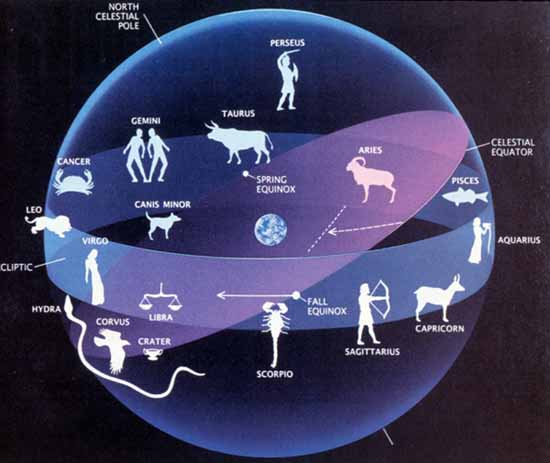
参考記事:The Cosmic Mysteries of Mithras by David Ulansey
トークトロニー解釈とリビドー理論
屠る者と屠られる者
The Mithraic tauroctony is explored repeatedly in Jung’s fateful chapter in Wandlungen [und Symbole der Libido ], “The Sacrifice.” This image obviously held deep significance for him.
His interpretation was that Mithras was the “sacrificer and the sacrificed,” but “it is only his animal nature that Mithras sacrifices, his instinctuality.”
ユングの著書『リビドーの変容と象徴』(”Wandlungen und Symbole der Libido”)には師ジークムント・フロイトとの訣別を運命づけた章が含まれている。そこでユングは繰り返しミトラス教のトーロクトニーを探求している。明らかに、牡牛を屠るミトラの図像は彼にとって重要な意味を持っていた。
この屠殺のモチーフはミトラスが「屠る者であると同時に屠られる者である」ことにあるとユングは解釈する。しかし「ミトラスが屠ったのは自分自身の動物性、その本能性である」。
Yet the text holds another layer of meaning. In MDR, Jung reports that he waited two months before writing this chapter because he knew that his new ideas on the nature of the libido would cost him his relationship with Sigmund Freud.
By 1912, Jung had been deeply immersed in attempts to try to make sense of the tauroctony for at least two full years, and the problem had fascinated Freud for the same amount of time. The image was consistent from Scotland to Italy to Anatolia; it clearly meant something. The killing of the bull, the scorpion biting the bull’s testicles, and so on were symbols that were begging for psychoanalytic interpretation.
ところで、このテキストには別の意味が込められていた。『自伝』(”Memories, Dreams, Reflections”)の中でユングは、リビドーの本質に関する自分の新しい着想が、フロイトとの関係を終焉に導くだろうことを自覚していた、と述懐している。だから、この章を書くのを2ヶ月遅らせた、と。
1912年、ユングはすでに2年間もトーロクトニーの意味を解明しようと躍起になっていた。フロイトもまた同じ問題に魅了され、同様に多くの時間を費やしていた。スコットランドからイタリア、小アジア(アナトリア)に至るまで、ミトラスは同じモチーフで表されている。そこには明らかに何らかの意味がある。牡牛の殺害、牡牛の睾丸を刺すサソリなどは、精神分析家の解釈を求めてやまない象徴である。
フロイトの解釈
As their correspondence shows, Freud and Jung did not see eye to eye on the meaning of the Mithraic mysteries. And their disagreement over the tauroctony is a telling sign of dominance of Mithraism over psychoanalysis in Jung’s own personal symbolic system.
In a letter sent in June 1910, a month after Jung’s first public lecture on the psychological interpretation of mythological and Mithraic material, Freud offered Jung his interpretation of the bull slaying: It was “the killing of the animal ego by the human ego, as the mythological projection of repression, in which the sublimated part of the human being (the conscious ego) sacrifices (regretfully) its vigorous drives.”
二人の往復書簡を読めばわかるが、フロイトとユングは直接会ってミトラスの謎の意味を論じたわけではない。ただ両者のトーロクトニーに関する見解の違いを見ると、ユングが精神分析に使おうとする象徴体系は、ミトラス教から受けた影響を顕著に示している。
ユングが神話やミトラスに関する心理学的解釈を初めて世に問うたのは、1910年の公開講義の場だった。その1ヵ月後の6月、フロイトはユング宛の書簡で牡牛殺しに関する解釈を披歴している。フロイトによれば、(牡牛殺しのモチーフは)「人間自我による動物自我の殺害を意味する。これは人間の持つ衝動の昇華作用が、活発な欲動を(心ならずも)犠牲にした事実を神話に投影したのではないか」。
ユングの解釈
Jung disagreed. Instead, he told Freud, “there must be something very typical in the fact that the central symbol of fecundity, the useful and generally accepted (not censored) alter ego of Mithras (the bull) is slain by another sexual symbol. The self-sacrifice is voluntary and involuntary at once (the same conflict as in the death of Christ).”
ユングはこれに同意せず、こう返信している、「生殖能力の中心的シンボルが、すなわち有用性を一般に認められた(検閲されていない)ミトラスの分身(牡牛)が、別の性的シンボルに殺められたという事実には、何か非常に象徴的な何かがあるはずです。自己犠牲は自発的であると同時に強制的であった(イエスの死と同質の葛藤があった)のです」。
Here we see the beginnings of Jung’s firm but polite rejection of Freud, dismissing the psychoanalytic role of an unconscious censor that keeps the instincts out of awareness and putting forth instead a more pagan interpretation that views the Mithraic bull as an accepted alter ego of Mithras.
これが、ユングが礼儀正しくも頑なにフロイトを拒絶しはじめた最初である。フロイトの精神分析的解釈では、無意識のセンサーが意識を本能から守る。ユングはこの考えを退け、より異教的な解釈を打ち出した。ミトラス教の牡牛は誰もが認めるミトラス自身の分身(※自己犠牲)だというのである。
ミトラス教の天文学・占星術に基づくシンボリズム
There is yet another, more poignant meaning of the tauroctony for Jung, and, indeed, it forms part of a secret encased in the cista mystica of Jung’s life and work.
Jung notes in this same letter of June 26 that, “the Mithras myth has undergone an adaptation to the calendar.” This reveals that Jung has read Cumont and has likewise noted the astronomical and astrological basis of Mithraic symbolism.
Jung may have initially taken up the study of astrology to decipher Mithraic symbolism. “My evenings are taken up largely with astrology,” he wrote to Freud on June 12, 1911, further reporting that, “I make horoscopic calculations in order to find a clue to the core of psychological truth.” In 1911, Antonia Wolff had entered Jung’s life as his assistant, and she is believed to be the one who taught him astrology.
トーロクトニーは、これ以外にもユングにとって重大な意味を持っていた。実際、彼の人生と仕事の秘密を隠しておくシスタ・ミスティカ(秘密の匣)の一部になったのだ。
ユングは1912年6月26日付の先に紹介した手紙に「ミトラス神話は暦に採用されています」と書き、ミトラス教の象徴体系のベースが天文学的・占星学的基礎であると指摘している。キュモンの著作に触発されたのだろう。
ユングが占星術の研究を始めたのはミトラス教の象徴体系を読み解きたいと考えたからかもしれない。1911年6月12日付のフロイト宛書簡には「晩は占星術に捧げる時間です。星座の計算をして心理学の核心的真理を見つけるヒントを探すのです」と書いている。占星術は、1911年にユングの助手になったアントニア・ウォルフに教わったらしい。
フロイトという思想の生贄
He knew that the astrological sun sign of Sigmund Freud, born on May 6, 1857, was Taurus, the bull. The centrality of Mithraic tauroctony in “The Sacrifice” now taken on new meaning: it symbolizes the triumph of Jung’s broader concept of libido over the strictly instinctual (sexual or venereal) libido theory of Freud.
More important, it symbolized Jung’s sacrifice of Freud. His final break with Freud is therefore heralded with every reference to the “killing of the bull.”
1857年5月6日生まれのジークムント・フロイトの太陽宮が他ならぬ牡牛座であることをユングは知っていた。そうなると、彼がミトラス教のトーロクトニーを『犠牲』の中心テーマにしたことが新たな意味を持ち始める。あくまで本能にベースを置いた(すなわち性と性行為に還元される)フロイトのリビドー論に対して、ユングのより包括的なリビドー論が勝利するを象徴するからだ。
さらに、こちらの方が重要な点だが、それはユングがフロイトを “犠牲” にする意思を象徴しているのである。ユングは「牡牛殺し」に言及するたびに、フロイトとの最終的な訣別を予告していたようなものだ。
In early 1912, Jung connected the Mithraic tauroctony with the astrological sign Taurus and with sexuality in a very suggestive footnote to the section on which the tauroctony is discussed in detail: “Taurus is astrologically the Domicilium Veneris.” This was no doubt another hint to Jung’s readers that this chapter contained veiled references to his knowing sacrifice of his relationship with Freud and Freud’s sexual theory of libido.
1912年年頭、ユングはトーロクトニーを詳細に論じた章で、ミトラス教のトーロクトニーを、牡牛座や性の問題に結びつけて論じている。彼はそこに非常に思わせぶりな「牡牛座は占星術的にはドミシリウム・ヴェネリス(金星の棲み処)である」(※金星は牡牛座の守護星)という脚注を付けた。これによってユングが陰にこう読者に告げていたことは間違いない。この章で自分はフロイトとの関係、フロイトの性的リビドー論との関係を犠牲に捧げるつもりだ、と。
Did Jung’s fascination with the Mithraic image of the slaying of the bull feed into Freud’s fears that Jung had a death wish against him? Freud was a master of the language of symbolism and would cast an analytic glance on any obsessions, especially those of a trusted disciple who may have harbored secret desires to slay the father.
ミトラスの牡牛殺しの図像に強く惹かれれたユングは、まるでフロイトの死を望むかのようだ。そう思ってフロイトは恐怖を覚えただろうか?仮に有能な弟子が密かに父殺し願望を抱いていたとしても、象徴言語のマスターであるフロイトなら、そのような妄想をも冷静に分析してみせたことだろう。
<記事引用終わり>
ユングのユダヤ的価値観への反抗
この文章のポイントは、ユングがトークトロニーを分身殺し(slaying of alter ego)と見ている点にあるだろう。分身は古い自分を象徴する。この場合、ユングの「古い自分」とは、宗教改革以降、自由は拡大したが、唯物論と合理主義にどぷりはまり、魂の飢えには十分応えてくれなかった時代の自分だ。
おそらくユングにとって牡牛座生まれのフロイトはそうした旧時代のシンボルに感じられただろう。フロイトが理性で克服すべき闇を見なした無意識を、ユングは人類の集合知が、完全な人間に生まれ変わるために保存してきた魂の基質だと考えた。それはむしろ光の原質なのだ。これではそりが合うわけがない。
ユングの時代、ドイツ文化圏ではあらゆる面で強烈な民族主義を台頭させた。ヒトラーの悲劇までは半世紀の時間しかない。ユングは自己回復に目覚めたゲルマン人の代表者とも見なせる。彼はどうしても(フロイトに象徴される)ユダヤ的精神を克服しなければ気が済まなかったのだ。
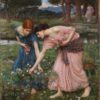
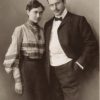
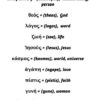

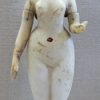
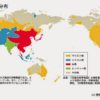
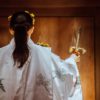
ディスカッション
コメント一覧
まだ、コメントがありません